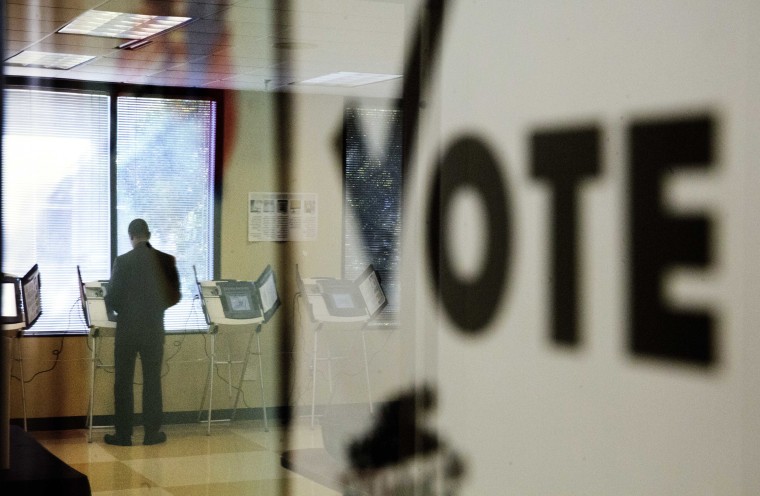More than 26 million voters have already cast early ballots a week ahead of Election Day 2016, nearly double the amount of early vote at this point in the 2012 election, according to new analysis by the NBC News Data Analytics Lab.
On October 30, 2012, one week ahead of the Obama vs. Romney match-up, roughly 13.5 million voters had cast early ballots nationwide. Ahead of Election Day, early votes are generally cast via early in-person voting, no excuse in-person absentee voting or mail-in absentee voting.
{
"ecommerceEnabled": false
}In 12 battleground states in this year’s election, 12,602,929 ballots have already been cast. In 2012 in these same states, just 8 million had been cast a week ahead of Election Day.
{
"ecommerceEnabled": false
}Given the widespread attention on early voting in 2016, as well as specific encouragement from both Clinton’s and Trump’s campaigns to vote early in battleground states, the increase in early voting this year is not fully unexpected, but the magnitude of the increase is notable.
While it is not possible to make definitive conclusions about candidate leads or overall turnout at this point, the important question one week ahead of Election Day 2016 is what, if anything, these comparisons can actually tell us about how the 2016 race is shaping up.
{
"ecommerceEnabled": false
}In nearly every battleground state, early voting in 2016 is higher than it was at a similar point in the race in 2012. One exception is Iowa, where roughly 7,000 more voters turned out in 2012 than in 2016 one week ahead of the race.
When relating 2012 voter turnout patterns to 2016 patterns, it is important to be cautious in drawing any conclusions about final turnout. While turnout could end up being higher in 2016 compared to 2012, it is not possible to determine whether this will be the case based on early vote numbers. It may simply be the case that voters who normally participate on Election Day are voting earlier.
Changes in electoral administration, record-keeping, and reporting of early voting among specific Secretaries of state also may have occurred and can complicate across-year comparisons. State legislation regarding voter identification laws, shortening and lengthening of early voting windows and other procedural factors can also impact early voting in myriad ways. In Arizona and Colorado, for example, changes in mandatory vote-by-mail laws in select counties can seemingly inflate early vote numbers.
With all of these caveats in mind, there are still some important takeaways so far.
When looking at the partisan breakdown of early voters in 2012 compared to 2016, Democratic-affiliated voters are outpacing their early 2012 performance in several battleground states.
{
"ecommerceEnabled": false
}{
"ecommerceEnabled": false
}In Arizona, Georgia and Pennsylvania, Republican-affiliated voters outpaced Democrat-affiliated voters in 2012 and also do so in 2016, though by smaller margins.
Similarly, in Iowa, North Carolina, Nevada, Ohio and Wisconsin, Democratic-affiliated voters also voted at higher rates than Republican-affiliated voters in 2012 a week ahead of the Election and are continuing this trend in 2016.
In Colorado, Michigan and Virginia, things look quite different from this year’s vantage point than they did in 2012. In 2012, Republican –affiliated voters outpaced Democrats in Colorado and Virginia by 3-point margins and a 13-point margin in Michigan. This year, Democratic-affiliated voters are outpacing Republicans by 3 points in Colorado and Michigan, and by 13 points in Virginia.
In Florida, a state that has received widespread attention this election cycle as it has in previous years, the number of Republican –affiliated voters and Democratic-affiliated voters who have cast ballots are tied as they were in 2012. Obama won Florida over Romney in 2012 by less than a percentage point.
As the campaign enters the final days of campaigning, these comparisons are informative because each candidate is pushing hard for a partisan advantage in early vote totals with the hope of going into Election Day with a lead. As more candidates put emphasis on the early electoral calendar, we may see many more voters in the United States casting ballots well before Election Day moving forward.
The 2012 and 2016 comparative early vote analysis was conducted by the NBC News Data Analytics Lab using voter file data provided by TargetSmart.
